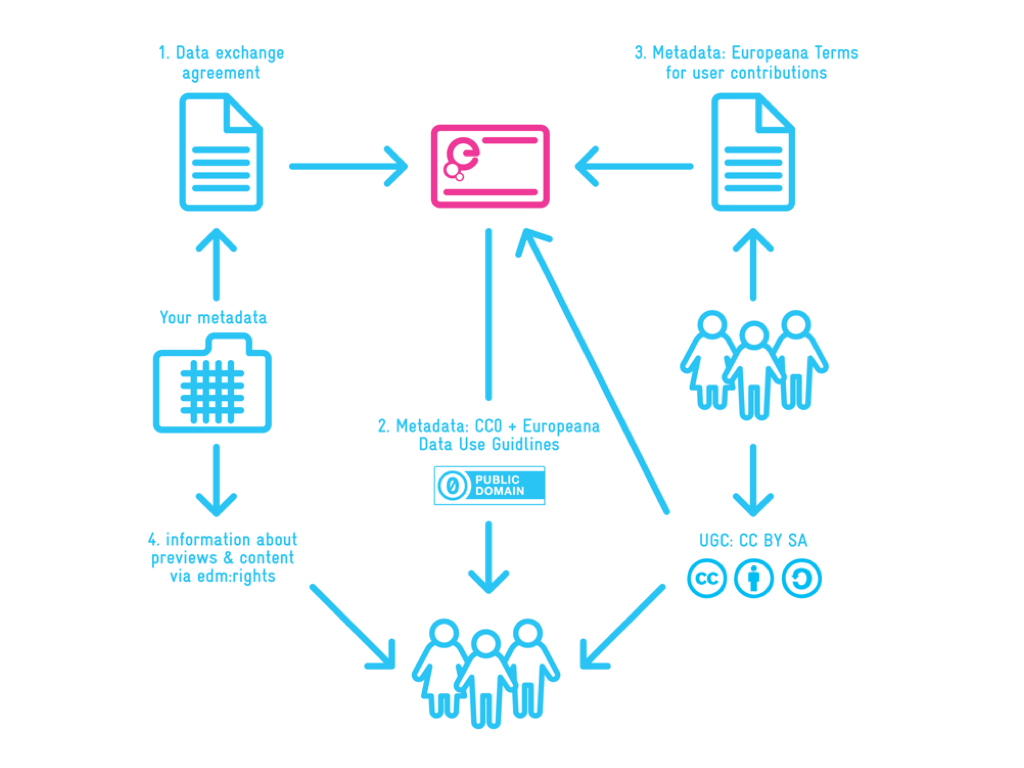Europeana Licensing Framework
The Europeana Licensing Framework standardises and harmonise rights related information and practices.
The Europeana Licensing Framework, developed in 2011, standardises and harmonises rights. Comprised of four elements, the Licensing Framework aims to bring clarity to a complex area, and make transparent the relationship between end users and the institutions that provide data.

1. The Data Exchange Agreement
The DEA structures the relationship between Europeana and its data providers. As of 1 July 2012, the DEA replaced all the existing agreements between Europeana and its data providers and aggregators. Read more about the DEA.
2. The Creative Commons Zero Universal Public Domain Dedication (CC0)
The DEA establishes that Europeana publishes metadata it receives from its data providers under the terms of the Creative Commons Zero Universal Public Domain Dedication (CC0). Read more about CC0 and data use guidelines.
3. The Europeana terms for user contributions.
These terms apply to end users who contribute content to Europeana (usually as part of Community Collection projects, such as Europeana 1914-1918). These terms have been developed so that Europeana can use content provided by its users and be able to integrate with other Europeana held content and data. Read the terms for user contributions.
4. The edm:rights field of the Europeana Data Model.
The Europeana Data Model specifies how data needs to be formatted so that Europeana can use it. Europeana uses the contents of the edm:rights field to tell end user under which terms they can use the previews and digital objects that they find via Europeana. Read the EDM Guidelines.
Explore terms used in the Europeana Licensing Framework in our glossary.
